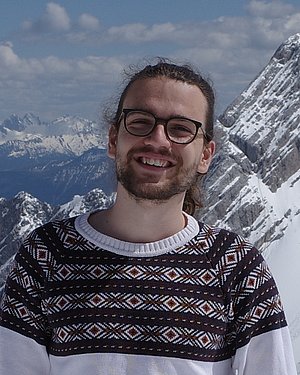Living in New York
New York is full, loud, hectic, expensive, but somehow still beautiful and an incredible experience. From going on morning runs in Central Park, grabbing cheap lunch in Chinatown, and going to bars with great wine and live music, you can do nearly everything in New York, and thanks to its building density and excellent metro, everything feels close-by. New Yorkers are open-minded, friendly people who love to meet new faces, so you’ll never really feel like an outsider no matter where you go and what you do. They will gladly share their hidden gems away from the tourist masses that start in mid to late April.
Everyone knows about AlphaFold – But does it live up to the hype?
I encountered the same welcoming atmosphere in the lab. During my stay I helped to build a fully automated pipeline that takes the amino acid sequence of a protein and a representation of a drug-like ligand molecule and can accurately predict the binding affinity between the ligand and the protein. These kinds of pipelines or models are immensely helpful in accelerating drug discovery, making it safer and cheaper to cure and prevent diseases. Using co-folding methods like the well-known alphafold3, whose developers won the 2024 Nobel Prize in Chemistry, I focused on the very first step of the pipeline: The prediction of the 3D structure of the protein-ligand complex. To validate these predictions, I was interested in two things:
- Can these models be used as an alternative to the slow, expensive x-ray crystallography approach that must be paired with error-prone docking, or do they hallucinate and predict nonsensical structures?
- What is the effect of using these models that were trained on crystallographic data on the binding affinity calculations that are simulated in solution at physiological conditions? What role does solvation play here?
Deep dive into drug design directorates
Due to the nature of the project I was working on, I was invited to join the AI-driven Structure-enabled Antiviral Platform (ASAP) project, an international consortium aiming to accelerate drug discovery. Due to the affiliations with both the MSKCC, which is generally considered as one of the top three cancer clinics in the world, and ASAP, I got a lot of exposure to the administrative side of drug design, which was a great experience on its own. But the mood quickly shifted when the Trump administration started to massively cut down on scientific funding of the National Institutes of Health (NIH), cutting more than 1.8 billion dollars in less than 40 days, equivalent to nearly 40 times the funding RESOLV got from 2019-2025. Suddenly, projects had to be paused or completely abandoned, job security was gone, and due to the funding cuts to universities, students might not be able to start their PhD or bachelor’s thesis. Despite multiple announcements by President Trump on his platform Truth Social trying to scare people into not protesting, this sparked a front of resistance across the nation with a still ongoing fight against the Trump administration’s current course. Despite all that, we continued to look at hundreds of drug candidates over multiple targets, including SARS-COV2, which was especially targeted by funding cuts, cancelling over eleven billion dollars in COVID-related grants in a single day.
Still, I can’t wait to return one day, especially when there are fewer egg shortages, stock market crashes, or ideologically motivated attacks on science. I learned a lot during and outside of work and I am incredibly thankful for John’s invitation to join his excellent and welcoming group at the MSKCC, all the people who helped me with the tedious visa process and organizing, and RESOLV for the opportunity and the financial help to make it all possible.
-----------------------------------------------------
About the author





